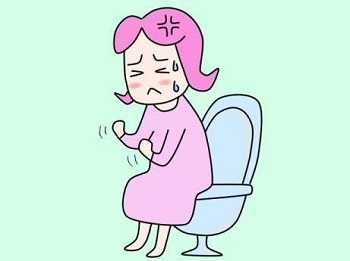Adenomyosis occurs when endometrial glands and stroma invade the myometrium, forming diffuse or regional lesions. Adenomyosis is similar to endometriosis, both of which belong to gynaecology as a kind of common and difficult disease. Adenomyosis mostly occurs in women aged 30-50 years or so, but it can also be seen in young women who have not given birth, which may have a certain relationship with the increase in various uterine operations.
Approximately 15% of patients have endometriosis and approximately 50% of women have uterine fibroids. The treatment of this disease is a drug intervention, and feasible surgical treatment, but the radical cure is extremely difficult. Some patients with adenomyosis, after their menopause, gradually resolve spontaneously.
People with adenomyosis usually have the following symptoms: uterine enlargement with more spherical and hard texture, and its quality can be tenderness; dysmenorrhea is the typical symptom of adenomyosis, mostly secondary, accompanied by progressive aggravation; menstrual disorder is the primary symptom of adenomyosis, mainly manifested as increased menstrual volume and prolonged menstrual period; the ectopic endometrium in the pelvic cavity often forms nodular lesions in the uterorectal fossa.
When the collision of cervical and the uterus are increasing during sexual intercourse, it causes pain. In a small number of patients with adenomyosis, infertility occurs.
Is Constipation Related to Adenomyosis?
In general, constipation and uterine adenomyosis have no closed relations.
The most common reason for constipation is related to the patient's healthy diet and digestion, women who have been sedentary for a long time will have a greater chance of constipation, except for one condition: if your uterus is very large, constipation is related to adenomyosis. We know the uterus is in front of the rectum.
Adenomyosis is the invasion of the endometrium into the myometrium, and then continues to grow, resulting in the fact that the uterus will be bigger and bigger. Some people's uterus and even three cervical lines have reached more than 100mm. You can imagine a uterus like the size of a large egg, turning into a uterus like a grapefruit. In such a case, the uterus squeezes on its organs in its front and behind. The rectum at the back is naturally affected, so constipation is a normal condition.
Women who suffer from adenomyosis is not the main reason for constipation condition. But the patient will appear the symptom of dysmenorrhea, and they may appear the symptom of constipation during menstruation. At the same time, adenomyosis patients may also be disturbed by uterine fibroids condition. The increase of the fibroids are likely to occur intestinal compression in patients, which can lead to constipation.
Also, patients who suffer from adenomyosis can appear the symptom of dysmenorrhea and anus falling inflation, so they may appear the symptom of constipation during menstruation, coupled with edema. The lesions are likely to occur in patients with intestinal compression, which can lead to constipation and anus-sank-up feeling. A lot of patients with adenomyosis said they always want to go to the toilet during menstruation. But as soon as they get to the toilet, they fail to defecate.
So if patients go to the hospital, the doctor may suggest that they do a detailed dye ultrasound examination and advise them to pay attention not to do too much movement intensity. Once adenomyosis is confirmed, timely treatment is necessary. Fortunately, natural medicine Fuyan Pill is a better option for adenomyosis patients. It can eliminate symptoms effectively. More importantly, it can clean up the metabolic waste and inflammation in the uterus and improve the natural rate of fertility.
You may also be interested in:




